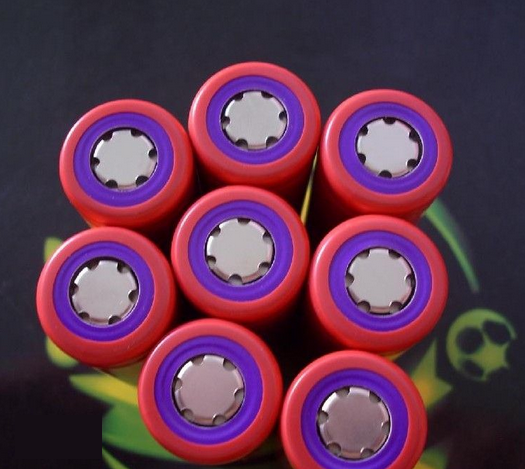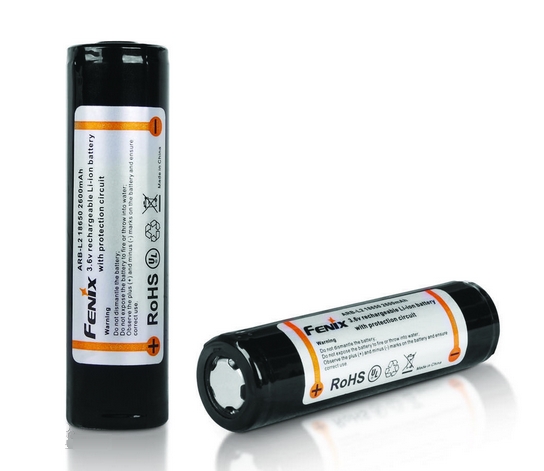What is an 18650 lithium battery?
1、 Introduction
18650 lithium battery (lithium ion, lithium ion battery): 18650 lithium battery has the advantages of light weight, large capacity, no memory effect and so on, so it has been widely used. Many digital devices use lithium-ion batteries as power sources, although they are relatively expensive. Lithium battery has high energy density, its capacity is 1.5 to 2 times of that of nickel hydrogen battery with the same weight, and its self-discharge rate is very low. In addition, the lithium-ion battery has almost no "memory effect" and does not contain toxic substances. In addition, please note that lithium batteries are usually labeled as 4.2V lithium batteries or 4.2V lithium secondary batteries, or 4.2V lithium-ion rechargeable batteries.
The standard for lithium batteries is 3.7V or 4.2V, which is the same. It's just that the manufacturer's label is different. 3.7V refers to the platform voltage (i.e. typical voltage) at which the battery is discharged during use, while 4.2V refers to the voltage at which the battery is fully charged. The voltage of a regular rechargeable 18650 lithium battery is 3.6 or 3.7 volts. When fully charged, it is 4.2 volts, which is almost independent of power (capacity). The mainstream capacity of 18650 batteries ranges from 1800mAh to 2600mAh (most 18650 power batteries have capacities of 2200-2600mAh).

18650 lithium battery
It is generally believed that when the no-load voltage of a lithium battery is below 3.0V, it is considered depleted (the specific value depends on the threshold of the battery protection board, such as as as low as 2.8V and 3.2V). Most lithium batteries cannot be discharged when the no-load voltage is below 3.2V, otherwise excessive discharge will damage the battery. Lithium batteries in the general market are mostly used with protective plates, so over discharge can also cause the protective plates to be unable to detect the battery and thus unable to charge it.
4.2V is the highest limit voltage for battery charging. When the no-load voltage of the lithium battery is charged to 4.2V, it is considered that the battery is fully charged. During the battery charging process, the battery voltage gradually increases from 3.7V to 4.2V, and the lithium battery cannot be charged. Charge the no-load voltage above 4.2V, otherwise it will damage the battery. This is the uniqueness of lithium batteries.
2、 The Use of 18650 Lithium Battery
The battery life theory for 18650 is 1000 charging cycles. Due to their high capacity per unit density, they are mostly used for laptop batteries. In addition, due to its excellent stability at work, 18650 is widely used in various electronic fields: often used in high-end glare flashlights and portable power supplies, wireless data transmitters, electric heating and warm clothing, shoes, portable instruments, portable lighting equipment, portable printers, industrial instruments, medical instruments, etc.
3、 Charging and discharging principle
The working principle of lithium-ion batteries refers to their charging and discharging principles. When the battery is charged, lithium ions are generated on the positive electrode of the battery, and the generated lithium ions move to the negative electrode through the electrolyte. Carbon, as a negative electrode, has a layered structure. It has many micropores. The lithium ions that reach the negative electrode are embedded in the micropores of the carbon layer. The more lithium ions inserted, the higher the charging capacity.

18650 lithium battery
Similarly, when the battery is discharged (i.e. during our use of the battery), the lithium ions embedded in the negative carbon layer are released and moved back to the positive electrode. The more lithium ions returned to the positive electrode, the higher the discharge capacity. The battery capacity we usually refer to is the discharge capacity.
It is not difficult to see that during the charging and discharging process of lithium-ion batteries, the lithium-ion is in a state of moving from positive to negative to positive and optimistic. If we compare lithium-ion batteries to rocking chairs, the two ends of the rocking chair are the two poles of the battery, and lithium-ion is like an excellent athlete running back and forth on both ends of the rocking chair.
Charging and discharging process
The charging control of lithium batteries is divided into two stages. The first stage is constant current charging. When the battery voltage is below 4.2V, the charger will charge at a constant current. The second stage is the constant voltage charging stage. When the battery voltage reaches 4.2V, due to the characteristics of lithium batteries, if the voltage is higher, it will be damaged. The charger will fix the voltage at 4.2V and the charging current will gradually decrease. When it drops to a certain value (usually 1/10 of the set current), the charging circuit is cut off and the charging completion indicator light is on
And the charging is complete.
Overcharging and discharging of lithium-ion batteries can cause permanent damage to the positive and negative electrodes. Excessive discharge leads to the collapse of the negative carbon sheet structure, which can lead to the inability of lithium ions to be inserted during the charging process; Overcharging causes excessive lithium ions to be inserted into the negative carbon structure, causing some lithium ions to no longer be released.
Some chargers are implemented using inexpensive solutions and have insufficient control accuracy, which can easily lead to abnormal battery charging and even damage to the battery. When choosing a charger, try to choose a large brand 18650 lithium-ion battery charger. The 18650 lithium-ion battery charger guaranteed by the brand has four types of protection: short circuit protection, overcurrent protection, overvoltage protection, battery reverse connection protection, etc.
Overcharge protection: When the charger overcharges a lithium-ion battery, in order to prevent internal pressure from increasing due to temperature rise, the charging state must be terminated. Therefore, the protection device needs to monitor the battery voltage. When the battery overcharging voltage is reached, the overcharging protection function is activated and charging is stopped.
Over discharge protection: To prevent over discharge of lithium-ion batteries, when the voltage of the lithium-ion battery is lower than its over discharge voltage detection point, the over discharge protection is activated, the discharge stops, and the battery remains in low static current standby mode.
Overcurrent and short circuit protection: When the discharge current of a lithium-ion battery is too high or a short circuit occurs, the protection device will activate the overcurrent protection function.
4、 Overall configuration
The nominal voltage of a single battery is usually 3.6V or 3.7V
The charging voltage is generally 4.20V (4.2V-4.3V for lithium cobalt oxide)
The minimum discharge termination voltage is usually 2.75V, which can lead to a serious decrease in battery capacity or even scrapping below this voltage
Maximum charging termination voltage: 4.20V
Diameter: 18 ± 0.2mm
Height: 65 ± 2.0mm
Capacity: Above 1000mAh, with a conventional capacity of 2200mAh to 3200mAh. The highest capacity of the 18650 battery is LG, which can reach 3600mAh, but the price is not low.
5、 Advantages and Disadvantages
advantage
1. Large capacity. The capacity of 18650 lithium batteries is generally between 1200mah and 3600mah, while the typical battery capacity is only around 800mah. If combined into an 18650 lithium battery pack, the 18650 lithium battery pack can easily exceed 5000mah.
2. Long service life. The 18650 lithium battery has a long lifespan, with a cycling life of over 500 times during normal use, which is more than twice that of a regular battery.
3. High safety performance. 18650 lithium batteries have high safety performance. To prevent battery short circuits, the positive and negative poles of the 18650 lithium battery are separated. Therefore, the short-circuit phenomenon may have been reduced to the extreme. A protective board can be installed to avoid overcharging and discharging of the battery, and to extend its service life.
4. High voltage. The voltage of 18650 lithium battery is usually 3.6V, 3.8V and 4.2V, which is much higher than the 1.2V voltage of nickel cadmium and nickel metal hydride batteries.
5. No memory effect, no need to empty the remaining battery before charging, convenient to use.
6. Low internal resistance: The internal resistance of polymer batteries is smaller than that of ordinary liquid batteries. The internal resistance of polymer batteries can even be lower than 35m Ω, greatly reducing battery self consumption and extending the standby time of mobile phones. This polymer lithium battery that supports high discharge current is the ideal choice for remote control vehicles, and it has become the most promising product to replace nickel hydrogen batteries.
It can be combined in series or parallel to form an 18650 lithium battery pack.
8. Widely used: laptops, walkie talkies, portable DVDs, instruments, audio devices, aircraft models, toys, cameras, digital cameras, and other electronic devices.
shortcoming
The biggest drawback of 18650 lithium batteries is their fixed size and poor positioning when installed in some laptops or products. Of course, this disadvantage can also be said to be an advantage. This is compared to other lithium batteries such as polymer lithium batteries. In terms of customizable and convertible sizes, this is a disadvantage. Compared to certain products with specific battery specifications, it has become an advantage.
Bayonet needle
The production of 18650 lithium batteries requires a protective circuit to prevent the battery from being overcharged and causing discharge. Of course, this is necessary for lithium batteries, which is also a common drawback of lithium batteries, as the materials used in lithium batteries are mostly lithium cobalt oxide materials, which cannot discharge at high currents.
18650 lithium batteries require higher production conditions. Compared to general battery production, 18650 lithium batteries have high requirements for production conditions, which undoubtedly increases production costs.
-
Whatsapp

